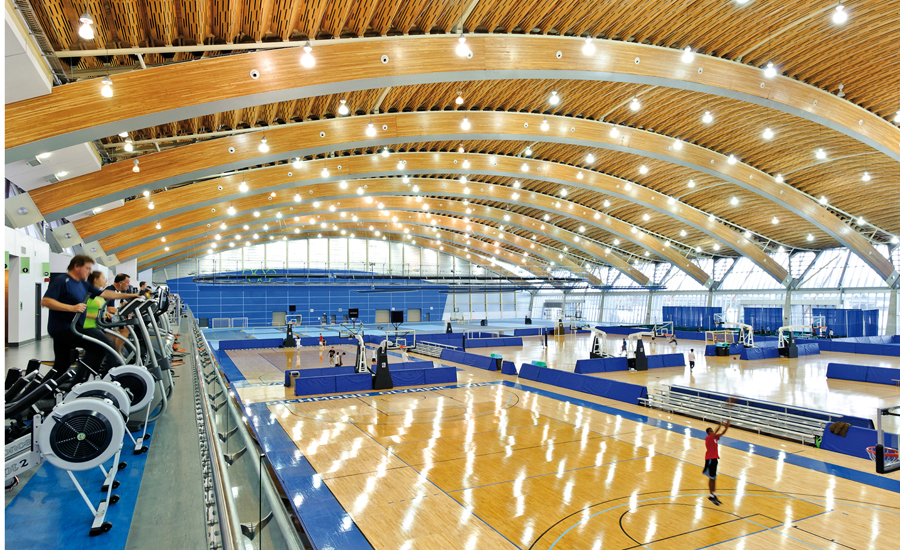Back in 2010, when Vancouver, B.C., was aglow hosting the Winter Olympics there was ballyhoo over the venues housing the games. Some were significant upgrades to wearied structures, while others offered shiny new examples of what folks were calling “legacy” design. These buildings, the supporters said, would not only serve the city well in putting a good foot forward to the world during the two-week event, but later serve the community well in future adaptions.
There would be no white elephants in Vancouver, they said.
The Richmond Olympic Oval lived up to the billing. And it did so beautifully.
One of the most anticipated of the new venues, located on the Fraser River just south of downtown Vancouver in the city of Richmond, B.C., the picturesque exterior merged nicely with the urban environment of a growing Richmond—complete with a growing SkyTrain line, at the time. But inside is where the building wowed, with the all-wood roof showing off a prime British Columbia industry and helping to serve the needs of the Richmond Olympic Oval both during the speed skating portion of the Olympics and well beyond.
And now the Richmond building, designed by CannonDesign under the lead of Ken Wiseman, has an award no other North American venue does: a listing on the IOC’s most significant sports venues from the past 50 years. To mark the 50th anniversary of the IOC’s International Association for Sports and Leisure Facilities, this first-ever list recognized the oval with nine other international buildings.
Sure, this is an Olympics-focused list, which duly excludes plenty of North American sites, but the oval helped create a new reality for speed skating venues. Before the Richmond Olympic Oval, Olympic speed skating venues were single-use buildings, which didn’t lend them for much meaningful use post-Olympics. The flexible and adaptive interior environment allowed Richmond to change that, turning the venue into a community home for sport, recreation, culture and fitness.
Legacy worked out just fine for the Richmond Olympic Oval.
Follow Tim Newcomb on Twitter at @tdnewcomb.


Post a comment to this article
Report Abusive Comment